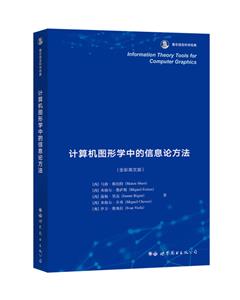
作者:Zheng Nanning editor
页数:145页
出版社:浙江大学出版社
出版日期:2022
ISBN:9787308227544
电子书格式:pdf/epub/txt
内容简介
本书从人类的视听觉认知与神经机理出发,围绕认知过程的“表达”与“计算”的基本科学问题,重点开展“感知的基本特征、表达与整合”“感知数据的机器学习与理解”“多模态信息协同计算”等三个核心科学问题的研究,发展和构建新的计算模型与算法。
作者简介
视听觉信息的认知计算项目组,项目组组长为郑南宁。中国工程院院士,人工智能、计算机视觉与模式识别专家。长期从事人工智能与模式识别、计算机视觉及其先进计算架构的应用基础理论与工程技术的研究。
目录
Chapter 1 Program Overview
1.1 Program Introduction
1.1.1 Overall Scientific Objectives
1.1.2 Core Scientific Issues
1.2 Program Layout
1.2.1 Project Deployment
1.2.2 Comprehensive Integration
1.2.3 Situation of Interaction Between Disciplines
1.3 Significant Progress
Chapter 2 Research Status
2.1 Research Status at Home and Abroad
2.2 Development Tendency
2.2.1 Cognitive Computing Theories and Methods for Visual and Auditory Information Based on Neuromorphic Computing
2.2.2 Enhancing Perception of Visual and Auditory Information in Cognitive Computing Systems
2.2.3 Improved Ability of Discovering Knowledge in Big Data
2.2.4 Enhanced Ability of Natural Language Comprehension
2.2.5 Man-in-the-Loop, Human-Computer-Cooperation and Hybrid Augmented Intelligence
2.2.6 Development of More Powerful and Reliable Autonomous Smart Cars (Robots)
2.2.7 Study of Driving Brain with Selective Attention Memory Mechanism
2.2.8 Theoretical Capabilities and Limitations of Cognitive Computing for Visual and Auditory Information
2.2.9 Advances in Hardware Architecture Design for Cognitive Computing of Visual and Auditory Information
2.3 Trend of Field Development
Chapter 3 Major Research Achievements
3.1 Leaping Development of Basic Theories of Cognitive Computing
3.1.1 Creation and Development of
1.1 Program Introduction
1.1.1 Overall Scientific Objectives
1.1.2 Core Scientific Issues
1.2 Program Layout
1.2.1 Project Deployment
1.2.2 Comprehensive Integration
1.2.3 Situation of Interaction Between Disciplines
1.3 Significant Progress
Chapter 2 Research Status
2.1 Research Status at Home and Abroad
2.2 Development Tendency
2.2.1 Cognitive Computing Theories and Methods for Visual and Auditory Information Based on Neuromorphic Computing
2.2.2 Enhancing Perception of Visual and Auditory Information in Cognitive Computing Systems
2.2.3 Improved Ability of Discovering Knowledge in Big Data
2.2.4 Enhanced Ability of Natural Language Comprehension
2.2.5 Man-in-the-Loop, Human-Computer-Cooperation and Hybrid Augmented Intelligence
2.2.6 Development of More Powerful and Reliable Autonomous Smart Cars (Robots)
2.2.7 Study of Driving Brain with Selective Attention Memory Mechanism
2.2.8 Theoretical Capabilities and Limitations of Cognitive Computing for Visual and Auditory Information
2.2.9 Advances in Hardware Architecture Design for Cognitive Computing of Visual and Auditory Information
2.3 Trend of Field Development
Chapter 3 Major Research Achievements
3.1 Leaping Development of Basic Theories of Cognitive Computing
3.1.1 Creation and Development of















